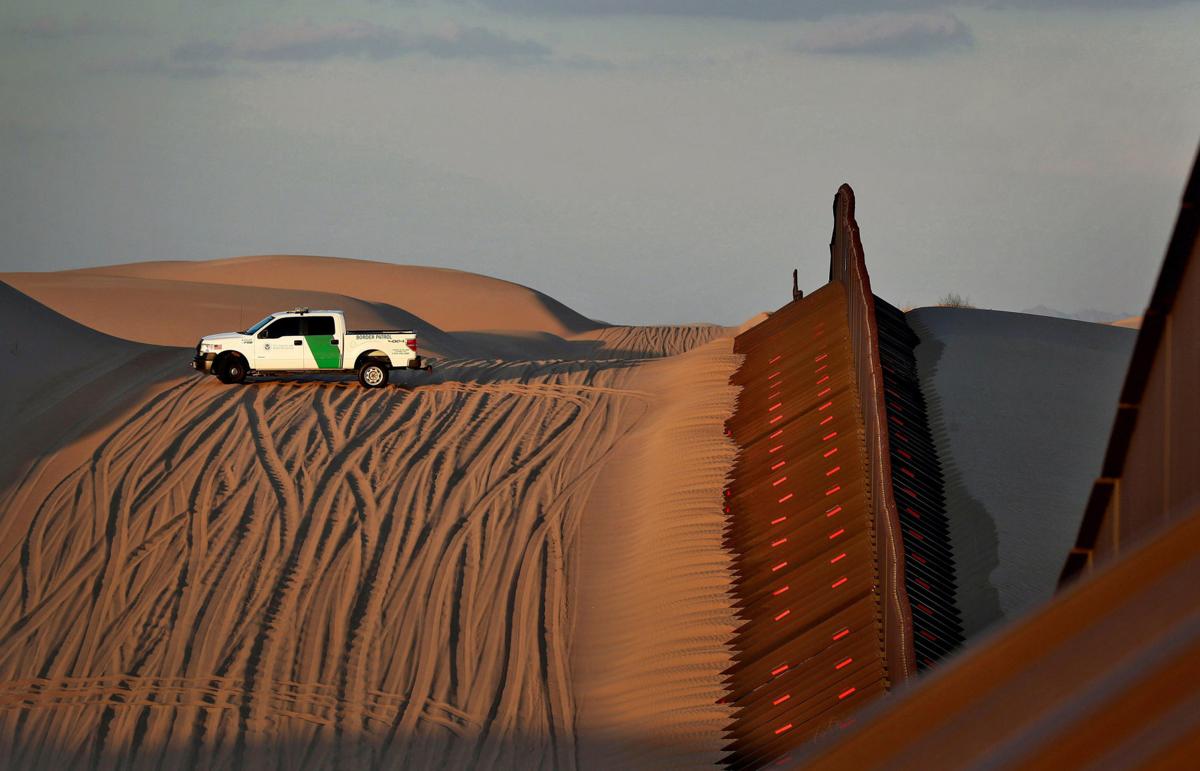ALBUQUERQUE, N.M. — President Donald Trump is not giving up on his demand for $5.7 billion to build a wall along the U.S.-Mexico border, saying a physical barrier is central to any strategy for addressing the security and humanitarian crisis at the southern border.
Democrats argue that funding the construction of a steel barrier along 234 miles will not solve the problems. A 2018 government report warns of increased risks that the U.S. wall-building program will cost more than projected, take longer than planned and not perform as expected.
Walls and fencing now cover about one-third of the 1,954-mile-long border. Some construction began with former President Bill Clinton in the early 1990s, George W. Bush ramped up the effort in 2006 and Barack Obama built more than 130 miles (209 kilometers), mostly during his first year in office.
Between 2007 and 2015, U.S. Customs and Border Protection spent $2.4 billion to add 535 miles of pedestrian and vehicle barriers and other infrastructure along the border.
Trump wants to extend and fortify what's already in place. But contracting, designing and building new wall systems complete with updated technology could take years, and past experience has shown such work can be complicated and costly.
Here is how much the government has spent on barriers in the states along the Mexican border:
ARIZONA
In 2006, the federal government completed a 30-mile stretch of steel barriers to keep people from illegally crossing into the Organ Pipe Cactus National Monument. The barriers were designed to stop vehicles from driving around a checkpoint in Lukeville or up through the desert wilderness. That three-year project had a price tag of $18 million.
More recently, Barnard Construction Co. Inc. of Montana was awarded $172 million for 14 miles of new fencing in the Border Patrol's Yuma Sector. Officials say the total value of that contract could reach $324 million for 32 miles.
CALIFORNIA
Much of California's 141 miles of border with Mexico was fenced during the Bush administration through a security measure that won congressional approval and had support from key Democrats.
In 2009, the federal government spent about $16 million a mile on a 3.5-mile stretch in San Diego, using about 2 million tons of dirt to fill in a canyon known as Smuggler's Gulch. The earthen dam was then topped with layers of fencing.
At the Imperial Sand Dunes, the U.S. built a floating fence of 16-foot-high steel tubes that can be raised or lowered as the sands shift. The $6 million-a-mile barrier cuts through a film location for "Star Wars: Return of the Jedi" that resembles the Sahara.
Both are examples of some of the rugged territory along the border that can result in higher costs.
The Government Accountability Office estimated in 2018 that new border wall construction averages $6.5 million a mile but terrain, building materials and other factors influence costs. Elsewhere, the Rio Grande's winding waters and lush vegetation are more challenging for erecting walls than Arizona's flat deserts.
NEW MEXICO
More than a dozen miles of fence were built near Columbus in 2000, stretching from the border town to an onion farm and cattle ranch. A survey done several years later determined that a 1.5-mile section that was designed to keep cars from illegally crossing into the U.S. was accidentally built on Mexican soil.
The project was believed to initially cost about $500,000 a mile, while estimates to uproot and relocate the fencing ranged from $2.5 million to $3.5 million.
In 2018, the federal government awarded a $73 million contract to the same Montana-based company to rip out old vehicle barriers and replace them with a new bollard-style wall of tall metal slats and extensive concrete footings along a 20-mile stretch near Santa Teresa. That project was finished months ahead of schedule.
TEXAS
Congress last spring approved $641 million for 33 miles of construction in South Texas' Rio Grande Valley, the busiest corridor for illegal border crossings. Targeted areas include the nonprofit National Butterfly Center, a state park and privately owned ranches and farmland.
In El Paso, construction started last fall in the Chihuahuita neighborhood — the border city's oldest neighborhood — to replace 4 miles of chain-link fencing with a new steel bollard wall. The estimated cost: $22 million.
There has been fencing for decades in cities such as El Paso and San Diego. Once built, increased crackdowns in those areas led to a drop in apprehensions. But authorities have complained that as a result of those efforts, illegal crossings and trafficking activity has been pushed to more remote stretches of the border.





